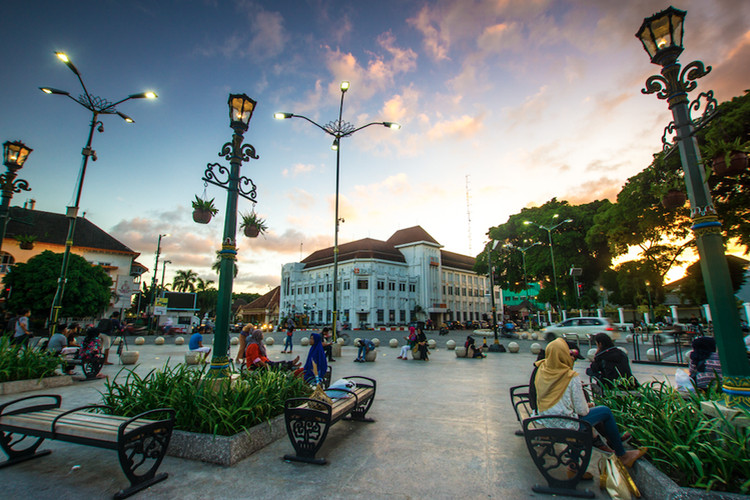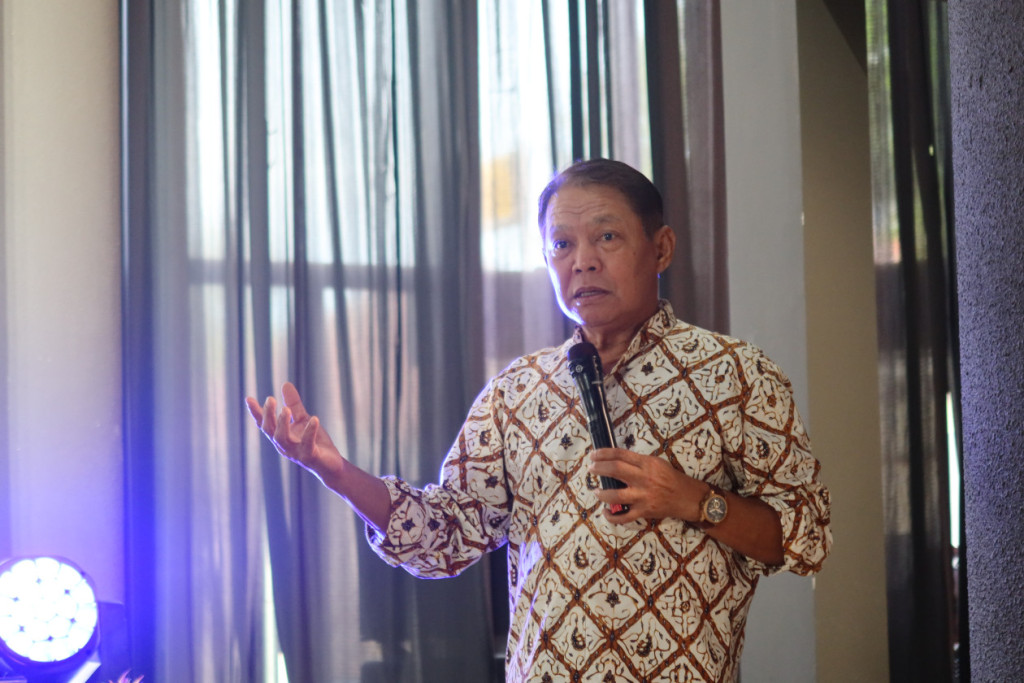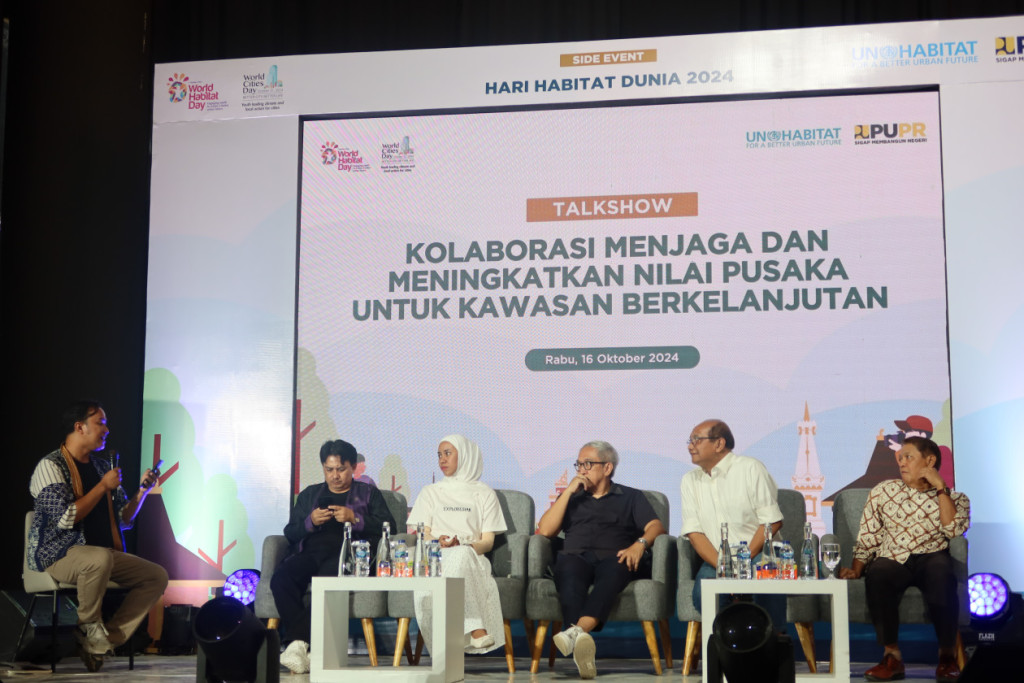
Informal workers who reside and earn their livelihood in urban areas need government attention to preserve heritage areas while contributing to economic sustainability.
Professor Bakti Setiawan, professor of urban planning at Universitas Gadjah Mada (UGM), conveyed this during a talk show titled “Collaboration in Preserving and Enhancing the Value of Heritage Cities for Sustainable Areas” on Wednesday (Oct. 16) at the UGM Innovation and Creativity Center (GIK UGM), a side event of the 2024 World Habitat Day series.
According to Professor Setiawan, thousands of informal workers have the right to live. They must be accommodated within the heritage areas while optimizing the city’s sustainability values.
“Just a reminder, we have a responsibility to accommodate all elements of the urban community,” he said.
He emphasized the importance of optimizing the informal sector because it remains the livelihood base for 70-80 percent of urban residents in Indonesia.

Professor Setiawan provided the example of a heritage city like the Malioboro area in Yogyakarta. He discussed the duality in Malioboro, where formal and informal sectors coexist.
Professor Setiawan reminded the audience that Malioboro comprises not only formal sectors such as shops, hotels, and malls but also the informal sector, which operates outside the government system, like settlements and street vendors.
He believes that, in line with the spirit of the Sustainable Development Goals (SDGs), particularly the New Urban Development Agenda, ensuring that the living environment is inclusive, resilient, and sustainable.
Other speakers in the talk show included the Founder of the Indonesian Architecture Documentation Center (PDA), Arya Abieta; Curator of the Indonesian Architects Association and Co-founder of M Bloc Group, Yacobus Gatot Surarjo; Founder of the Sawahlunto Creative Forum, Syukri Moonchak Sikumbang; and Founder of the Heritage Hero Community, Cindy Shandoval.
Abieta began his presentation by explaining the relationship between global warming and buildings, which now consume 36% of energy and are responsible for 39% of carbon emissions.
This is directly linked to the goal of reducing energy consumption in buildings, including heritage sites, through passive cooling and microclimate.
According to Abieta, the biggest challenge to preserving heritage is not these technical issues but the new owners of these heritage buildings.
“The challenge to heritage sites comes from new owners because they often lack a historical connection to the buildings.”
He also discussed the benefits of heritage buildings, citing examples from the Dutch colonial era, which were well adapted to the climate through passive cooling and microclimate.

Next, Yacobus Gatot Surarjo discussed “Adaptive Reuse x Placemaking.” Surarjo shared how he was inspired by previously neglected spaces, which he repurposed into functional spaces for different uses—ideas he adapted from various places worldwide to activate M Bloc.
He also briefly explained how the Block Space, originally abandoned Peruri housing, was transformed into M Bloc Space.
Sikumbang, the Founder of the Sawahlunto Creative Forum, spoke about Sawahlunto, now recognized as a world heritage city. His topic was “Enhancing the Community’s Economy through Creative Solutions Based on Sustainable Economics and Cultural Preservation in Sawahlunto.”
He provided a brief history of Sawahlunto, which initially was a coal mining hub and later became a UNESCO World Heritage Site.
Sikumbang outlined Sawahlunto’s tangible and intangible heritage potential and introduced the city’s rebranding to “PUSAKOTA” (Sawahlunto Heritage City), aiming to preserve the city’s heritage with the support of all stakeholders.
Sikumbang also elaborated on the challenges and strategies for cultural advancement, which include protection, development, utilization, and fostering based on prior cultural mapping efforts.
The final speaker, Cindy Shandoval, an Archaeology graduate from the UGM Faculty of Cultural Sciences (FIB UGM), discussed the role of youth in empowering Siak City, Riau Province, in line with Siak’s current slogan, “Siak ASIK (Nature, History, Innovation, and Collaboration).”
Shandoval explained the shift in Siak’s wealth from a natural resource-based economy centered around oil and gas to a focus on its cultural heritage.
Her background as an archaeologist helped her discover exciting aspects of artifacts and historical remains in Siak.
“We founded Heritage Hero to bridge the gap between local communities, academics, and researchers concerning cultural heritage,” she explained.
Shandoval also mapped out the potential of heritage buildings and human resources (HR) in Siak. She says HR’s role is crucial because people will activate their potential.
“Don’t forget that people are the ones who will drive this potential. The potential is always there, but it depends on whether the people want to engage with it,” she explained.
She created events based on Siak’s heritage potential, which eventually developed into a consortium called the Siak Sustainable Creative Hub.
This consortium drew the attention of the Siak Regency Government, which further challenged her to activate abandoned buildings and turn them into a creative hub.
Additionally, Shandoval created a travel package exploring Siak’s culinary heritage potential based on old archives she gathered and heritage buildings that had been activated.
Author: Leony
Editor: Gusti Grehenson
Photo: Shutterstock
Post-editor: Afif

